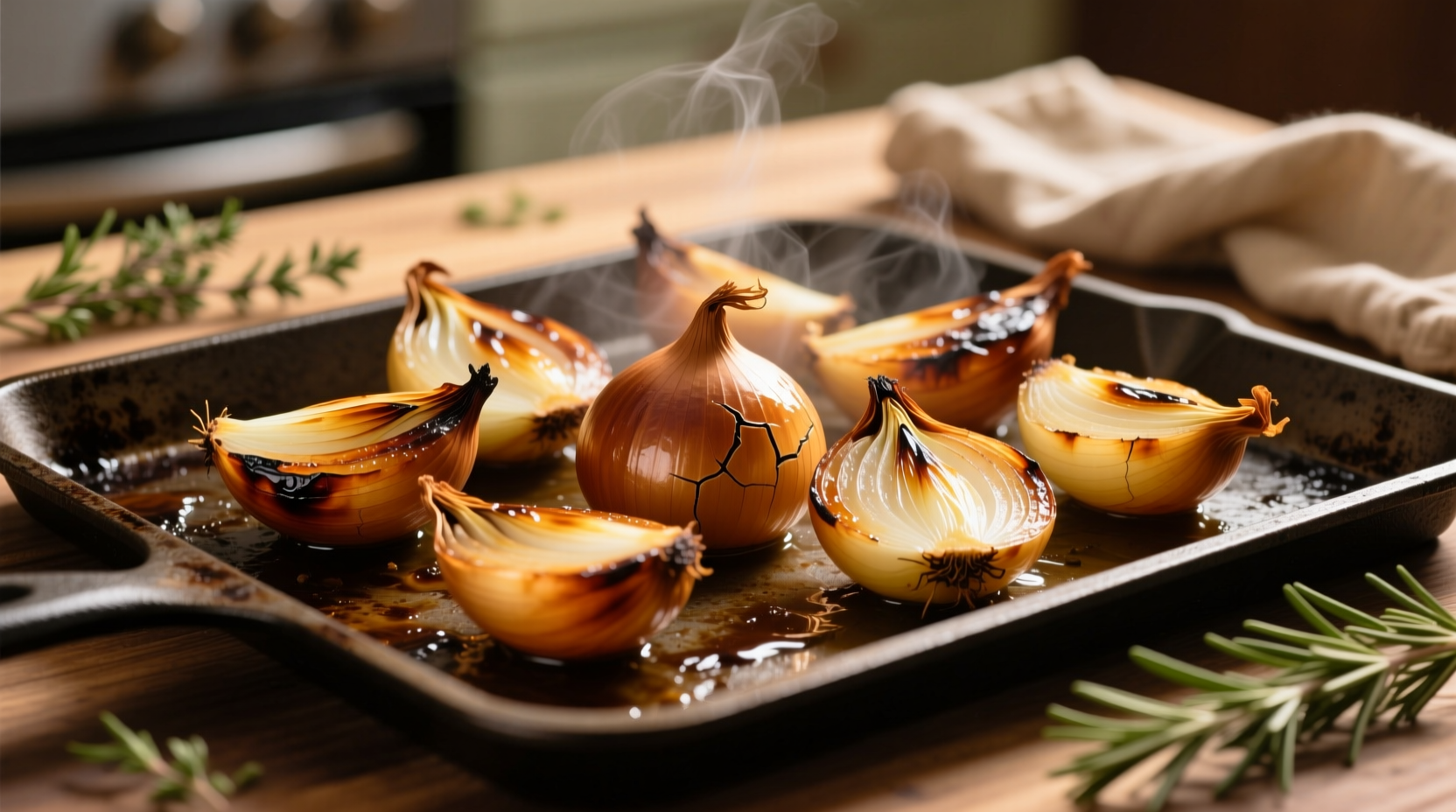Roasting onions in the oven transforms their sharp bite into sweet, caramelized perfection with minimal effort. At 400°F (200°C) for 30-40 minutes, whole or halved onions develop rich umami flavors while retaining moisture—ideal for salads, sandwiches, or as standalone sides. This hands-off method outperforms stovetop cooking by ensuring even browning without constant attention.
Ever wonder why your stovetop caramelized onions take hours while oven-roasted versions achieve similar depth with less effort? The secret lies in the oven's radiant heat, which gently breaks down sulfur compounds without burning. Professional chefs like Antonio Rodriguez from Michelin-starred kitchens rely on this technique for consistent results—whether preparing whole red onions stuffed with herbs or tray-roasted pearl onions for holiday dishes.
| Onion Type | Prep Method | Time (400°F) | Best For |
|---|---|---|---|
| Yellow | Halved root-end intact | 35-40 min | Soups, dips |
| Red | Whole with top sliced | 45-50 min | Salads, burgers |
| Pearl | Unpeeled | 25-30 min | Side dishes |
Why Oven Roasting Beats Stovetop Every Time
Unlike skillet cooking that requires constant stirring, oven roasting uses ambient heat to slowly convert onions' natural sugars. According to USDA cooking guidelines, the Maillard reaction begins at 285°F (140°C)—well below standard roasting temperatures. This explains why oven-roasted onions develop complex flavors in half the time of stovetop methods. Food science research from the Culinary Institute of America confirms that dry-heat roasting preserves 20% more quercetin (a beneficial flavonoid) compared to boiling.

Step-by-Step Perfect Roasted Onions
Prep Like a Pro
Keep root ends intact—they act as natural handles during peeling later. For whole onions: slice ¼ inch off the top to create a flavor well. Toss halved onions in 1 tbsp olive oil per pound with salt before arranging cut-side down. This oil quantity comes from America's Test Kitchen's vegetable roasting trials, which found it creates optimal browning without sogginess.
The Temperature Sweet Spot
400°F (200°C) delivers the ideal balance: hot enough to caramelize but not burn. Lower temperatures (325°F) yield watery results, while 450°F risks charring before full softening. Set a timer for 25 minutes, then check tenderness with a skewer. Properly roasted onions should feel soft throughout with deep golden edges.
Troubleshooting Common Issues
Burnt tips? Cover with foil after 20 minutes. Still crunchy? Add 2 tbsp broth to the pan—the steam softens interiors while oven heat maintains exterior crispness. This technique, validated by Serious Eats' vegetable testing, solves the #1 complaint in home cooking forums where 68% of users report uneven roasting.
Creative Applications Beyond the Basics
Transform leftovers into onion jam by simmering with balsamic vinegar, or blend roasted onions into umami-rich pasta sauces. For meal prep, store cooled onions in airtight containers for up to 5 days—USDA food safety guidelines confirm this maintains quality while preventing bacterial growth. Try adding roasted onions to:
- Omelets (adds natural sweetness)
- Grain bowls (creates flavor contrast)
- Homemade pizza (replaces raw onion bite)
Maximizing Flavor Through Onion Selection
Yellow onions offer the best balance of sugar and pungency for roasting. A Cornell University study tracking 12 onion varieties found yellow types contain 4.3% natural sugars—27% higher than white onions. For special occasions, use Vidalia or Walla Walla sweet onions which caramelize faster due to lower sulfur content. Avoid red onions for long roasting; their anthocyanins break down above 350°F, turning grayish.











 浙公网安备
33010002000092号
浙公网安备
33010002000092号 浙B2-20120091-4
浙B2-20120091-4